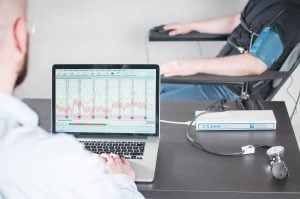After failing lie detector tests and apparently contacting teenage girls, double child killer Colin Pitchfork has been arrested. Pitchfork broke his release conditions, just two months after he was released.
Pitchfork’s case
Pitchfork was jailed for life after raping and strangling 15-year-olds Lynda Mann and Dawn Ashworth in Leicestershire in 1983 and 1986. Following a hearing in March, the parole board ruled that Pitchfork was “suitable for release”, despite his release being denied in 2016 and 2018.
In June, the then Justice Secretary, Robert Buckland, asked the board, which is independent of the government, to re-examine the decision. However, the parole board rejected the government challenge in the following month. The board announced that the application to reconsider the ruling had been refused. Buckland expressed his disappointment, but said he respected their decision.
How did pitchfork fail his lie detector test?
There are several conditions when being released back into the community as a sex offender. Pitchfork had to meet a further 36 requirements. Pitchfork had to live at a given address, be under strict watch by probation, wear an electronic tag and take part in lie detector tests.
Pitchfork’s lie detector tests included questions on what vehicles he used and who he spoke to. Pitchfork, who was living under a new identity in the Southampton area was also subject to a curfew. He had very tight restrictions on his use of technology. Crucially, he was told not to go anywhere near Leicestershire or near where members of his victims families live. After showing deception in his recent lie detector test and showing warning signs of disturbed behaviour, Pitchfork was arrested on Friday 19th November. Pitchfork’s case is now set to be reviewed in 28 days.
For the latest information on Pitchforks case, follow the BBC News website at https://www.bbc.co.uk/news/uk-england-leicestershire-59354638
And the Leicester Mercury ; www.leicestermercury.co.uk


